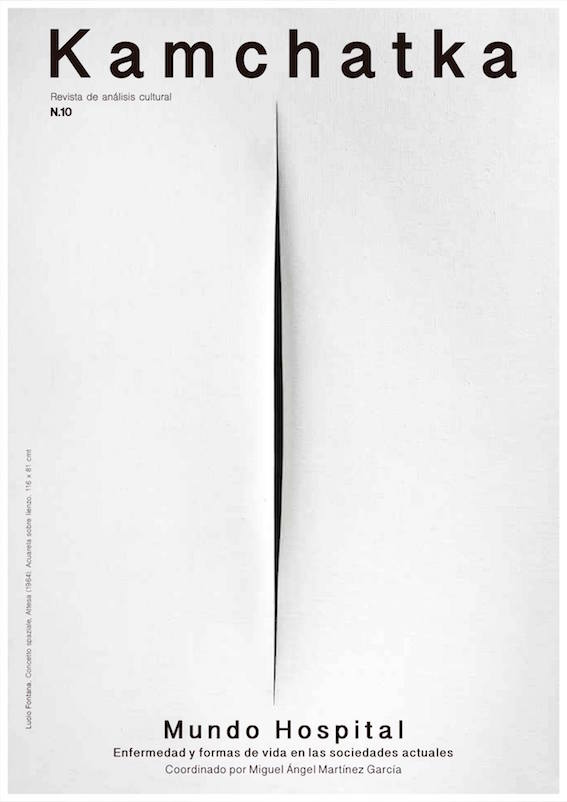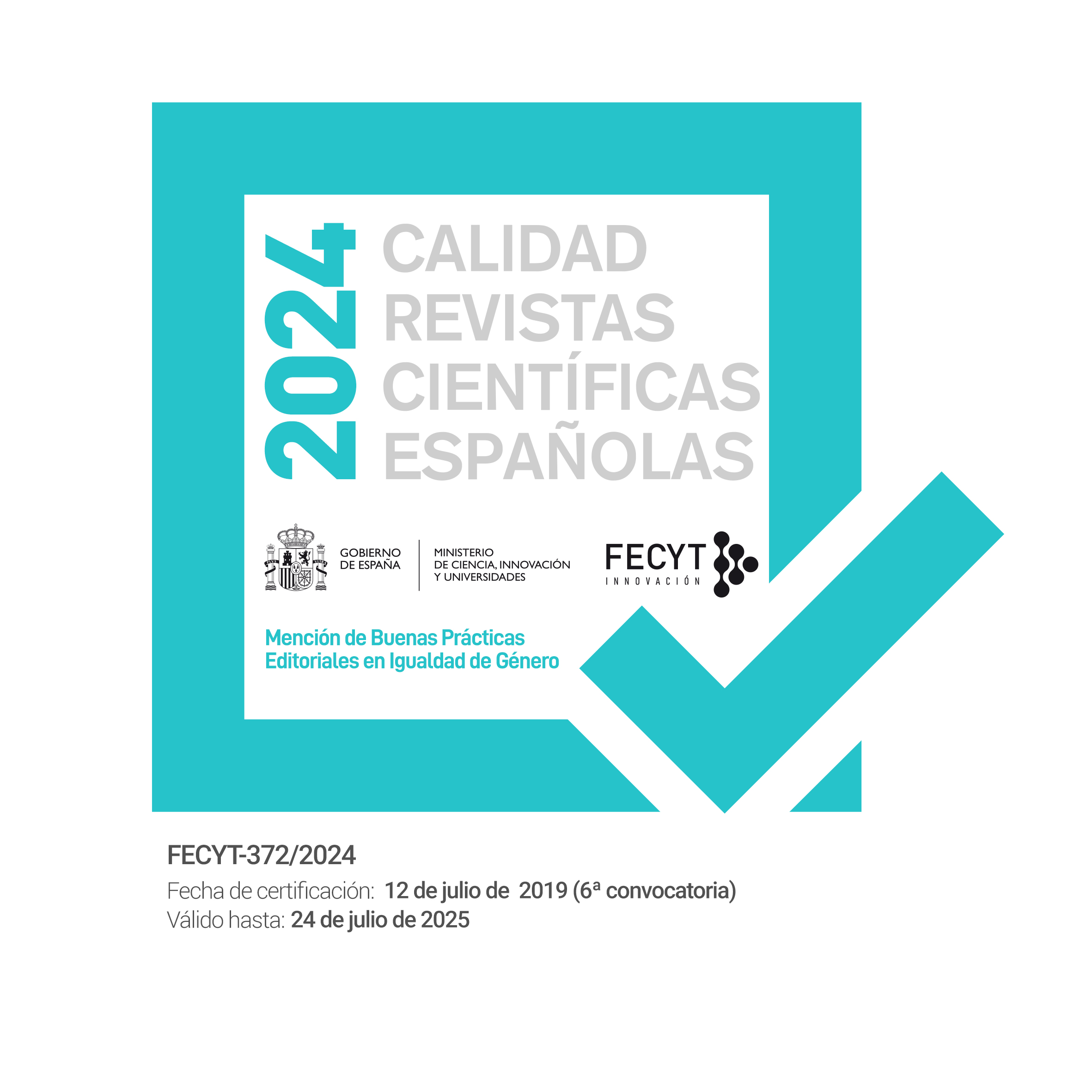Desde la clínica de fertilidad: alianzas reproductivas, madres jubileas y bebés probeta / From the fertility clinic: reproductive alliances, jubilee mothers and test tube babies
DOI:
https://doi.org/10.7203/KAM.10.10523Palabras clave:
clínica de fertilidad, tecnología de reproducción asistida, maternidad, filiación, subjetividad, discurso de la medicina Resumen
Resumen
Resumen: Este artículo comienza abordando el discurso producido en torno a la tecnología de la reproducción asistida. A partir de los textos emitidos por la clínica de fertilidad, se pretende comprender el papel actual de los tratamientos reproductivos y plantear, yendo más allá de las críticas que generan, en qué han ayudado a derribar estereotipos muy establecidos. En primer lugar, la generalización de las tecnologías de reproducción asistida ha acabado con el relato hegemónico sobre la concepción humana (en el que un espermatozoide poderoso logra conquistar un óvulo e iniciar una vida nueva). En segundo lugar, la clínica de fertilidad obliga a entender la reproducción humana como una tarea colectiva, en la que se generan relaciones fructíferas. En tercer lugar, también hace emerger nuevas subjetividades ligadas a la maternidad/paternidad y la filiación, que consiguen desestabilizar ciertas identidades de género y de familia que han sido privilegiadas hasta ahora. A modo de ejemplo de nueva subjetividad, se propone la maternidad jubilea, en cuya fusión de cuerpo y tecnología queda cuestionada con éxito la construcción social de la esterilidad.
Palabras clave: clínica de fertilidad, tecnología de reproducción asistida, maternidad, filiación, subjetividad, discurso de la medicina.
Abstract: This article addresses the discourse of assisted reproduction technology. By analyzing texts produced by fertility clinics, the aim is to describe the current role of reproductive treatments and to consider their benefits in undermining well-established stereotypes. First, the increase in the use of assisted reproductive technologies breaks down the hegemonic narrative of human conception (in which the powerful sperm conquers the egg to start a new life). Second, in fertility clinic human reproduction should be considered a collective task, in which fruitful relationships are developed. Third, assisted reproductive technology fosters the emergence of new subjectivities linked to motherhood/fatherhood and filiation, which destabilize prevailing gender and family identities. As an example of a new subjectivity, jubilee motherhood is proposed. The fusion of body and technology in it challenges the social construction of infertility.
Keywords: fertility clinic, assisted reproductive technology, motherhood, filiation, subjectivity, medical discourse.
 Descargas
Descargas
 Citas
Citas
Barker, Kristin. “A Ship upon a Stormy Sea: the Medicalization of Pregnancy”. Social Science & Medicine 47(8) (1998): 1067-1076.
Boltanski, Luc (2004). La Condition Foetale: une sociologie de l’engendrement et de l’avortement. París: Gallimard.
Brinsden, Peter (2011). “The evolution of ART”. Donnez, Jacques y Kim, Samuel (eds.). Principles and Practice of Fertility Preservation. Cambridge: Cambridge University Press: 1-10.
Brubaker, Sarah y Dillaway, Heather. “Medicalization, Natural Childbirth and Birthing Experiences”. Sociology Compass 3(1) (2009): 31-48.
Clarke, Gary. “A.R.T. and history, 1678-1978”. Human Reproduction 21(7) (2006): 1645-1650.
Cussins, Charis. “Ontological Choreography: Agency through Objectification in Infertility Clinics”. Social Studies of Science 26(3) (1996): 575-610.
Dawes, Robyn; Faust, David y Meehl, Paul. “Clinical Versus Actuarial Judgment”. Science 243(4899) (1989): 1668-1674.
De Barros, Isabel María. “Parir por la boca. Vicisitudes de un tema sorprendente del imaginario de la comadreja”. Lectura y Signo 10 (2015): 73-86.
De Lacey, Sheryl. “IVF as lottery or investment: contesting metaphors in discourses of infertility”,. Nursing Inquiry 9(1) (2002): 43–51.
Deleuze, Gilles (1999). “Post-scriptum sobre las sociedades de control”. Deleuze, Gilles: Conversaciones 1972-1990 (272-286). Valencia: Pre-textos.
Denny, Elaine. “Liberation or oppression? Radical feminism and in vitro fertilization”. Sociology of Health & Illness 16(1) (1994): 62-80.
Esposito, Roberto (2005). Inmunitas. Protección y negación de la vida. Buenos Aires: Amorrortu.
Gordon, Linda (1976). Woman’s Body, Woman’s Right: A Social History of Birth Control in America. Nueva York: Grossman/Viking.
Gupta, Jyotsna A. y Richters, Annemiek. “Embodied Subjets and Fragmented Objects: Women’s Bodies, Assisted Reproduction Technologies and the Right to Self-Determination”. Bioethical Inquiry 5 (2008): 239-249.
Haraway, Donna (1995). Ciencia, cyborgs y mujeres. La invención de la naturaleza. Madrid: Cátedra.
Katz Rothman, Barbara (1989). Recreating motherhood: Ideology and technology in a patriarchal society. Nueva York: W.W. Norton and Co.
Kirkman, Maggie. “Egg and Embryo Donation and the Meaning of Motherhood”. Women & Health 38(2) (2003): 1-18.
Konrad, Monica. “Ova Donation and Symbols of Substance: Some Variations on the Theme of Sex, Gender and the Partible Body”, The Journal of the Royal Anthropological Institute 4(4) (1998): 643-667.
Lam, Carla (2014). New Reproductive Technologies and Disembodiment. Feminist and Material Resolutions. Nueva York: Routledge.
Laufer, Dominique y Mauron, Véronique (2016). Voyage en zygotie. Histoires d’embryos. Nante: Cécil Defaut.
Lazaratou, Hélène y Golse, Bernard. “Du désir à l'acte : les enfants de la procréation médicalement assistée (PMA)”. La psychiatrie de l'enfant 2(49) (2006): 573-599.
Lie, Merete y Lykke, Nina (2017). “Editorial Introduction”. Lie, Merete y Lykke, Nina (eds.) Assisted Reproduction Across Borders: Feminist Perspectives on Normalizations, Disruptions and Transmissions. Nueva York: Routledge: 1-21.
Martin, Emily. “The Egg and the Sperm: How Science Has Constructed a Romance Based on Stereotypical Male-Female Roles”. Signs 16(3) (1991): 485-501.
McCulloh, David (2009). “Quality control: maintaining stability in the laboratory”. Gardner, David; Weissman, Ariel; Howles, Colin y Shosham, Zeev (eds.) Textbook of Assisted Reproductive Technologies. Laboratory and Clinical Perspectives. Londres: Informa: 9-24.
Moore, Lisa Jean (2007). Sperm Counts. Overcome by Man’s Most Precious Fluid. Nueva York: New York University Press.
Oakley, Ann (1984). The Captured Womb: A History of the Medical Care of Pregnant Women. New York: Basil Blackwell.
Orobitg, Gemma; Bestard, Joan y Salazar, Carles. “El cuerpo (re)productivo. Interés económico y altruismo social en las experiencias de un grupo de mujeres donantes de óvulos”. Revista Andaluza de Antropología 5 (2013): 91-104.
Parry, Diana. “Women’s lived experiences with pregnancy and midwifery in a medicalized and fetocentric context: Six short stories”. Qualitative Inquiry 12 (2006): 459-471.
Paulson, Richard; Reindollar, Richard y Doody, Kevin. “Toward standardizing the embryo transfer procedure: from ‘how to’ to ‘how many’”. Fertility and Sterility 107(4) (2017): 880-881.
Perrotta, Manuela (2008). “The organizational construction of the body in assisted reproductive technologies”. Molfino, Francesca y Zucco, Flavia (eds.). Women in Biotechnology. Nueva York: Springer:171-181.
Persad, J.D. “Egg Donation: Women, Assisted Human Reproduction, and Feminism”. Ignite 4(1) (2012): 83-90.
Ravitsky, Vardit. “The right to know one’s genetic origins and cross-border medically assisted reproduction”, Israel Journal of Health Policy Research 6 (2017): 3.
Rúdólfsdóttir, Annadís. “I am not a patient, and I am not a child: The Institutionalization and Experience of Pregnancy”. Feminism & Psychology 10 (2000): 337-350.
Rothman, Barbara (1991). In Labor: Woman and Power in the Birthplace. Nueva York: W.W. Norton.
Sabatello, Maya. “Are the Kids all right? A Child-centred Approach to Assisted Reproductive Technologies”. Netherlands Quarterly of Human Rights 31(1) (2013): 74-98.
Sandelowski, Margarete. “Fault Lines: Infertility and Imperiled Sisterhood”. Feminist Studies 16(1) (1990): 33-51.
Sharif, Khaldoun y Afnan, Masoud. “The IVF league tables: time for a reality check”. Human Reproduction 18(3) (2003): 483-485.
Showden, Carisa (2011). Choices Women Make: Agency in Domestic Violence, Assisted Reproduction, and Sex Work. Minneapolis: University of Minnesota Press.
Thompson, Charis (2002a). “Fertile ground: feminists theorize infertility”. Inhorn, Marcia y van Balen, Frank (eds.) Infertility around the Globe: New Thinking on Childlessness, Gender, and Reproductive Technologies. California: University of California Press: 52-78.
Thompson, Charis (2002b). “Strategic Naturalizing: Kinship in an Infertility Clinic”. Franklin, Sarah y McKinnon, Susan (eds.). Relative Values: Reconfiguring Kinship Studies. North Carolina: Duke University Press, 175-202.
Thompson, Charis (2005). Making Parents. The Ontological Choreography of Reproductive Technologies. Cambridge: MIT Press.
Vilella, Felipe; Moreno-Moya, Juan; Balaguer, Nuria; Grasso, Alessia; Herrero, María; Martínez, Sebastian; Marcilla, Antonio y Simón, Carlos. “Hsa-miR-30d, secreted by the human endometrium, is taken up by the pre-implantation embryo and might modify its transcriptome”. Development 142 (2015): 3210-3221.
Wallace, Lora E. y Chason, Holly. “Infant Feeding in the Modern World: Medicalization and the Maternal Body”. Sociological Spectrum 27(4) (2007): 405-438.
Weil, Éva. “Que transmettent les cigognes ?”. Champ psy 2(60) (2011): 27-39.
Zwelling, Elaine. “The Emergence of High-Tech Birthing”. Journal of Obstetric, Gynecologic & Neonatal Nursing 37(1) (2008): 85-93.
Descargas
Publicado
Cómo citar
-
Resumen1737
-
Artículo10253
Número
Sección
Licencia
Los textos publicados en esta revista están –si no se indica lo contrario– bajo una licencia Reconocimiento-NoComercial 4.0 de Creative Commons. Puede copiarlos, distribuirlos y comunicarlos públicamente siempre que cite su autor y el nombre de esta publicación, Kamchatka. Revista de análisis cultural y no los utilice para fines comerciales. La licencia completa se puede consultar en Creative Commons.
Aquellos autores/as que tengan publicaciones con esta revista, aceptan los términos siguientes:
- Los autores/as conservarán sus derechos de autor y garantizarán a la revista el derecho de primera publicación de su obra, el cuál estará simultáneamente sujeto a la Licencia de reconocimiento no comercial de Creative Commons que permite a terceros compartir la obra siempre que se indique su autor y su primera publicación esta revista.
- Los autores/as podrán adoptar otros acuerdos de licencia no exclusiva de distribución de la versión de la obra publicada (p. ej.: depositarla en un archivo telemático institucional o publicarla en un volumen monográfico) siempre que se indique la publicación inicial en esta revista.
- Se permite y recomienda a los autores/as difundir su obra a través de Internet (p. ej.: en archivos telemáticos institucionales o en su página web) antes y durante el proceso de envío, lo cual puede producir intercambios interesantes y aumentar las citas de la obra publicada.





